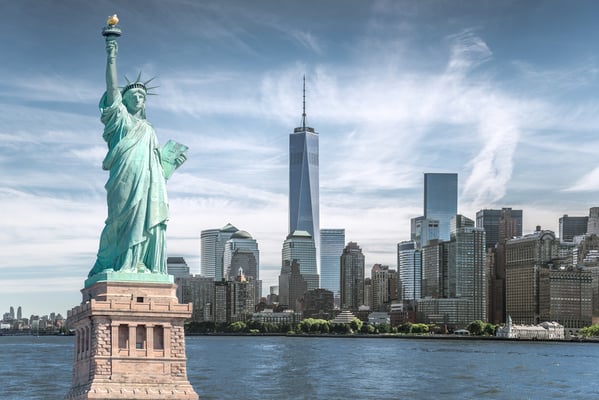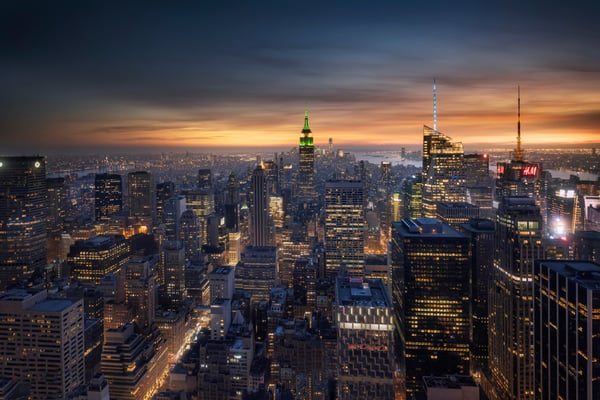NYC Announces Deep Energy Retrofits for 9 City-Owned Buildings

The New York City government has been characterized by taking the lead in green construction and sustainability. This is reflected by initiatives like the Greener, Greater Buildings Plan (GGBP) and the Climate Mobilization Act. Leading by example, the city government has selected nine buildings for deep energy retrofits, which will cut energy consumption by 50% or more. The lessons learned from this project will provide insight into how to retrofit similar buildings.
Find the best energy efficiency measures for your building.
Energy efficiency measures have traditionally focused on specific building systems, such as air conditioning and lighting. On the other hand, a deep retrofit focuses on analyzing and improving the entire building as a system. This provides an opportunity to achieve synergy between different measures, which is overlooked when building systems are upgraded separately.
Overview of the Deep Retrofit Projects

The Official Website of the City of New York announced retrofit projects for the following nine buildings:
- DSNY Manhattan Garage 7
- NYPD Building Maintenance Section Facility
- DCLA Brooklyn Museum
- DHS Harlem 1 Men’s Shelter
- DHS Keener Assessment Shelter
- DHS Bushwick Family Residence
- DHS Stockholm Family Residence
- DOE PS62 Bronx
- DOE MS301 Bronx
The nine retrofit projects are planned for completion in 2025. The NYC government will also start energy audits to identify retrofit opportunities in 28 other buildings. The initial selection of buildings for deep retrofits covers different types of properties, and the lessons learned could have various applications.
The Climate Mobilization Act demands a 50% reduction in emissions from government buildings by 2030. The Act is better known as the NYC Green New Deal, and it was passed early in 2019. The Act mandates an overall emissions reduction of 40% by 2030 - slightly less demanding than the 50% requirement for city-owned buildings.
The Act focuses on buildings since they are responsible for 70% of emissions in NYC. The actions taken by the local government are steps towards a more ambitious goal, which is making NYC carbon-neutral by 2050.
How To Reduce Building Energy Consumption by 50%

As previously mentioned, a deep retrofit focuses on the entire building instead of individual systems. Achieving energy savings of 50% is unlikely with only equipment upgrades, and the building itself must be improved to demand less energy. A deep retrofit project will typically include the following types of measures:
- Major improvements for the building envelope: Improving insulation to increase the R-value, while detecting and sealing air leaks. Conventional windows can be upgraded to triple-pane windows with low-emissivity coating.
- Maximum daylight: Lighting systems are among the largest electrical loads in buildings, and they are only surpassed by air conditioning in most cases. For this reason, a natural lighting design can offer attractive savings. However, the design must minimize the unwanted effects of sunlight - glare and summer heat gain.
- Automated heating and cooling: In residential and commercial buildings, heating and cooling systems normally consume more energy than all other devices combined. Equipment upgrades can cut energy bills, but greater savings are possible when automatic controls optimize HVAC operation in real-time.
Building envelope improvements and natural lighting are very important since they reduce energy needs in the first place. A poorly insulated building will waste energy on heating and cooling, even if it has the most efficient HVAC equipment. The same applies to a building that depends on artificial lighting: even LEDs consume more energy if they are needed all the time.
Energy audits have a fundamental role in building retrofits. The energy consumption patterns of buildings change depending on the occupancy type, and differences can be found even between properties of the same type. By getting a professional energy audit before any investment decision, building owners can maximize the avoided emissions and the energy saved per dollar spent.

Michael Tobias
Michael Tobias, the Founding Principal of NY Engineers, currently leads a team of 150+ MEP/FP engineers and has led over 4,000 projects in the US
Join 15,000+ Fellow Architects and Contractors
Get expert engineering tips straight to your inbox. Subscribe to the NY Engineers Blog below.

